Intro:
When it comes to your dream home, what do you envision? Do you have a large home or small home? Is the style of your home contemporary, traditional, or rustic? Does it have large open rooms with natural lighting? What color would you like the walls and cupboards to be? Now think about your flooring, what are your first thoughts? Do you prefer the look of an espresso floor, or do you favor the lighter colors? Would your flooring be multi-toned, or is it all the same? Is the floor grainy or smooth? These are all key aspects to consider when determining which flooring will be the perfect choice for your home. In this blog we will explore the question: How to choose flooring?
Light Floors:
Light floors are the 2020 trending go-to for any home. These light-colors have recently surged to the forefront of modern design as they brighten rooms, producing a home that feels large and spacious. Light-colored floors tend to hide a fair bit of the household dust and footprints, which is beneficial for a home housing a busy family. One thing to keep in mind is that some lighter flooring is prone to fading more than dark flooring. This is due to how light floors reflect light rather than absorb it. One concern with lighter colored flooring is that it may present the risk of appearing to be washed out. If this is the case, a simple fix would be to provide contrast with the light fixtures, area rugs, and furniture. These lighter tones are what you would want when designing a modern, traditional style home that is timeless.
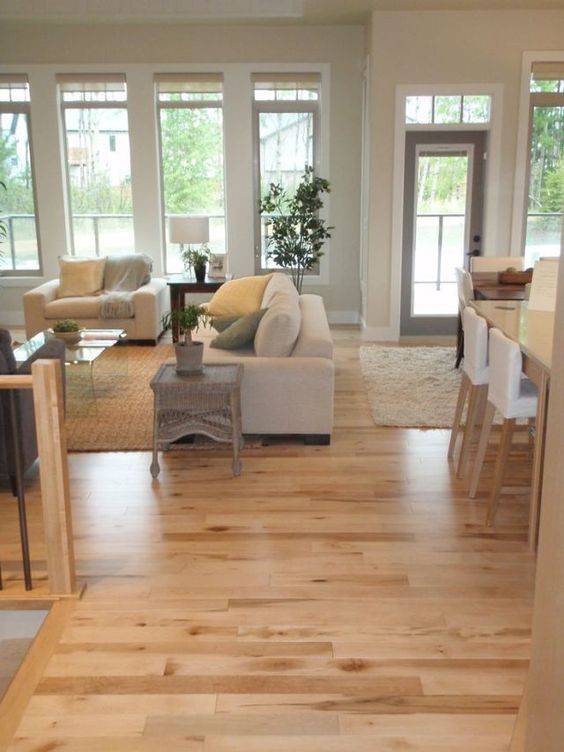
Light Hardwood Flooring On Main Floor
Dark Floors:
Dark floors tend to be elegant and rich toned. They can contrast gorgeously with lighter/neutral walls, cupboards, and furniture. However, these floors do tend to show dust and even the occasional footprint. One way to help minimalize a continually dirty flooring would be the finish. A satin or matte finishing is preferable over a glossy, as the glossy finish tends to be shinier, and as a result, shows more of the messes. Depending on the species of wood, some floors may be more prone to scratching. Due to the decorative layer or finish being darker than the natural light wood color underneath, one hazard is that the floor can be more prone to show scratches. Another thing to keep in mind is the sizing of your rooms, do they present an open concept with natural lighting? If your house is one that lacks natural lighting, you may want to consider going with a lighter floor as the darker tones may lend itself to making the home feel smaller and even claustrophobic. On the positive end, dark-colored flooring can contribute to a home not only looking elegant but feel cozy and inviting. Also, to contrast the dark-colored floors, you can always break a space up with a lighter colored area rug! These darker tones are what is needed when attempting to achieve a traditional, modern look.
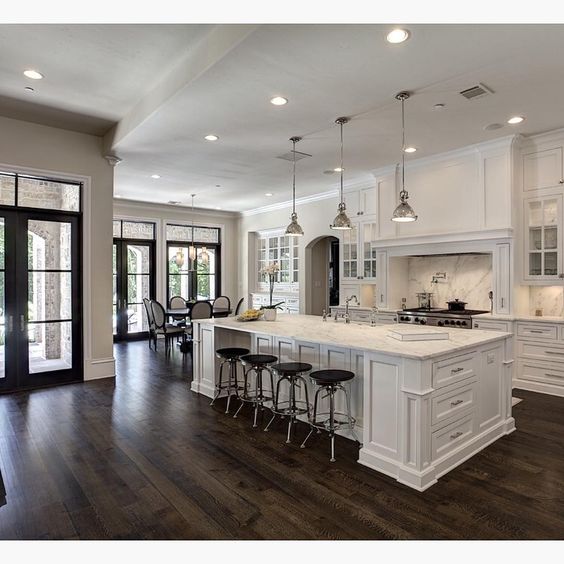
Dark Hardwood Flooring on Main Floor
Grey Floors:
Grey floors, because of its increased popularity and demand, a frequently asked question by customers is, are grey floors a dying fad? Although it may not be as traditional as dark or natural colored flooring, grey-toned floors are a neutral tone that goes with a wide array of other colors and wood types. Any wood species that has a natural wood grain can be accentuated with the grey flooring leaving you with a gorgeously textured floor. One thing to keep in mind, some undertones of grey flooring can lead to a particular space appearing to be very blue and even potentially purple. These color hues can be dependent on the stain color, lighting, wall color, etc. Also, as well as lighter-colored flooring grey tends to hide dust, hence, another perfect color for your busy lifestyle. Grey floors are ideal in the way that they are eye-catching and leave you to choose whichever style of home you want.
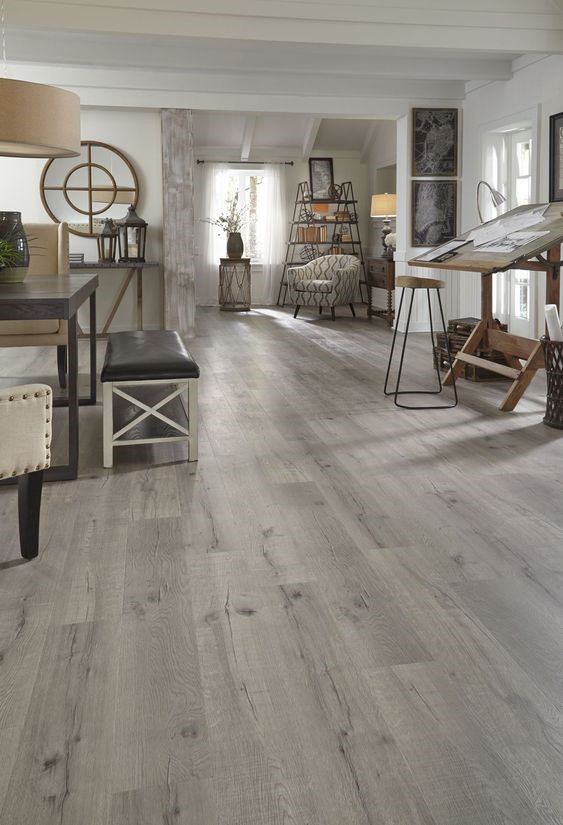
Grey Oak Flooring On Main Floor
Red Floors:
Red floors, these floors tend to be a warm, classy floor that becomes a complimenting statement for any home. These floors can be a traditional, contemporary floor, well suited for heritage neighborhoods. When choosing a red floor for your home, keep in mind that it is there to make a statement. To prevent a red-colored floor from completely overtaking a space, you can choose a complimenting wall color, décor, area rug, and even another statement color. These red floors also another great color for hiding dirt and scratches. Traditional red-toned floors, however, may not appeal to everyone’s style. If you are looking at flipping a home or selling within the next while, you may want to consider going with another color.
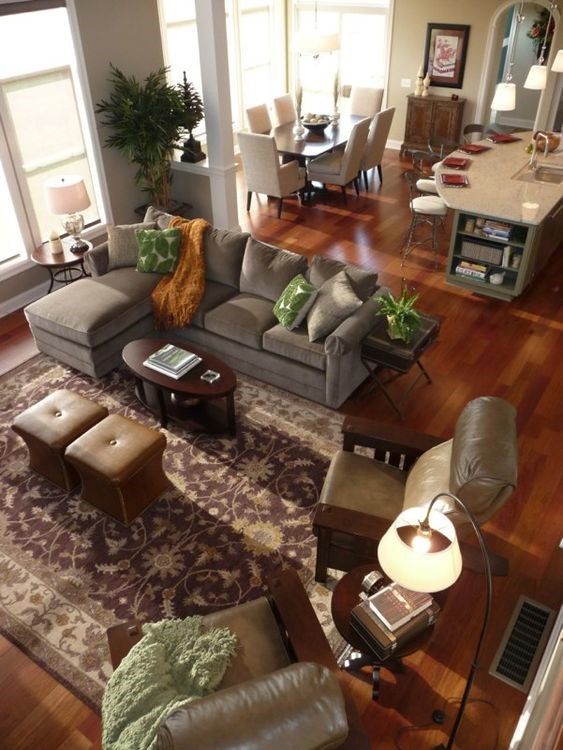
Red Flooring On Main Floor
Multi-Toned Floors:
Multi-Toned Floors, these high-variation floors have seen increased popularity and can make any space fun! If they are a decent pattern and color theme, they are then a unique and complimenting asset to your home. With multi-toned flooring, there are no limits to the wall color and furniture. This type of flooring can look very busy when not kept consistent throughout the whole floor plan. It is best to go all the way rather than attempting to match up to existing flooring. Although this flooring can be unique and fun, it may not be everyone’s forte. If you are looking to put this in a flip house, you may want to consider something more universal.
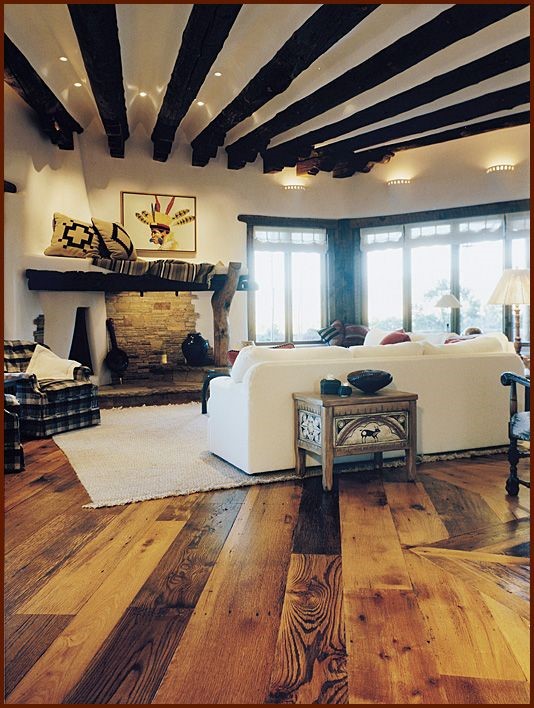
Multi Toned Flooring On Main Floor
Conclusion:
When embarking on your flooring journey, acquire samples of your next potential flooring to take home. Move the samples from room to room and analyze them at varying times of day, as the lighting considerably affects the tones of any flooring. Flooring trends are developing continually and filled with unique ideas that are timeless. Flooring is an investment that not only adds value to your home but can make or break the look of your home. So, why not have fun and take your time when deciding which type of flooring colors will best suit.





Recent Comments